Introduction
A rolling condition survey of mounted herbarium specimens was recommended in the 2010 RBGE Synthesys Self-Assessment Collections Care Report. An initial pilot survey was carried out in 2011-12, when 8,302 specimens in the Zingiberaceae family were assessed, and where necessary given preventative care by digitisation staff, or referred for remedial conservation treatments. The survey method was subsequently used to record the condition of specimens in the Gesneriaceae family; specimens from the Middle East, Chile, Argentina, Uruguay, Australia; and for selected collectors e.g.Erich Werdermann (1892-1959) and Robert Brown (1773-1858).
The pilot survey demonstrated that it is possible to integrate a basic level of systematic condition assessment of herbarium specimens into a digitisation workflow, making good use of limited staff time, and raising awareness of preservation issues and it is now a standard part of the imaging workflow.
Collections Care Priorities
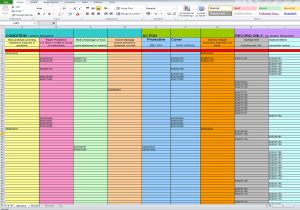
Condition survey spreadsheet
The pilot survey was developed around RBGE’s primary collections care priorities:
- to preserve the valuable information present in the specimens for future researchers: preservation = access
- to make this information more widely available through digitisation
Therefore survey priorities were to record:
- actual or potential loss of plant material and/or label data requiring immediate remedial treatment
- handling issues requiring preventative measures
- potential degradation of plant material and/or label data requiring future assessment
- specimens with cellophane or polythene coverings which would hinder clear imaging.
Method
The survey is carried out whilst staff are imaging or databasing the specimens, to reduce unnecessary additional handling of specimens, with barcodes of specimens being recorded in an Excel spreadsheet under the relevant ‘reporting categories’. These barcodes are subsequently linked to the herbarium database to gather additional information about the specimens.
There are 7 categories that staff record:
- Non-archival material e.g. cellophane or polythene
- Paper problems e.g. too flimsy to handle
- Risk of damage or loss e.g. loose attachment or material
- Insect damage
- Sent for repair (specimen sent for remedial conservation treatment by trained herbarium technician)
- Surface dirt e.g. soot, dirt
- Stained sheet e.g. insecticide residue
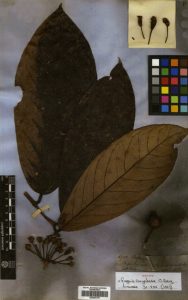
Sooty specimen
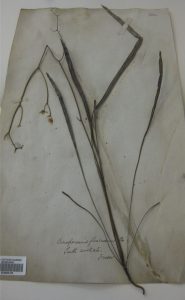
Loose specimen in need of remedial conservation treatment
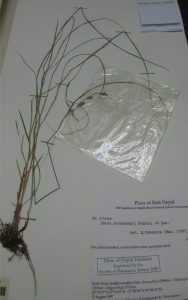
Cellophanne packet on specimen
The first 4 of these generally result in the specimen being sent for repair, although in some cases digitisation staff are able to place fragile specimens in archival paper folders with backing boards, or bulky specimens in archival card boxes for to reduce pressure points. Paper clips and pins are removed and where necessary replaced with archival brass paper clips. Insect damage is also referred to staff responsible for Integrated Pest Management (IPM) to ensure that appropriate action (eg freezing specimens and cleaning cabinets) is taken where necessary.
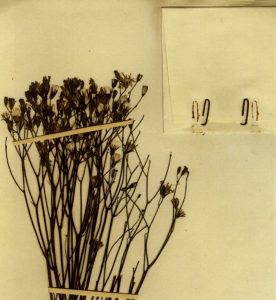
Rusty paperclips in need of replacment
Herbarium technicians and digitisation staff meet regularly and provide feedback to each other, and this is important for the consistency and accuracy of the survey process.
